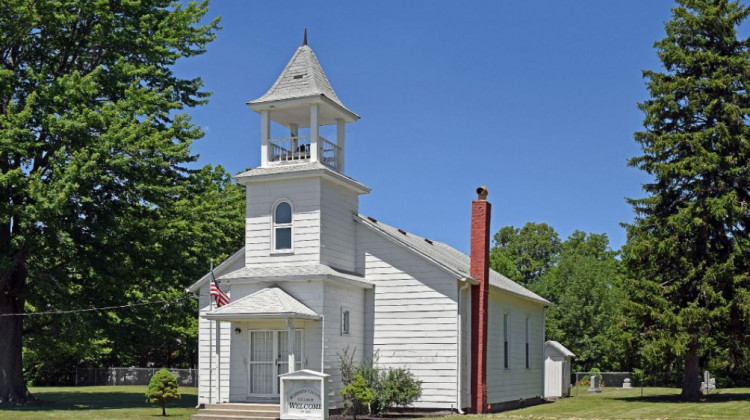Two funds honoring the legacy of Eli Lilly’s first Black chemist will provide grants to organizations working to preserve, restore and maintain important African-American landmarks in Indiana.
Standiford H. Cox died in 2019, but created these funds with the Central Indiana Community Foundation, one in his name and to honor his parents. Earlier this month Indiana Landmarks and CICF announced the distribution of $135,000 from the funds to 15 renovation and development projects of historical relevance to African-Americans throughout Indiana.
Read More: Partnership Aims To Preserve Indiana African American Sites
Mark Dollase is vice president of preservation services at Indiana Landmarks. WFYI’s Terri Dee spoke with him about Cox’s legacy and how sites are chosen for preservation.
WFYI Reporter Terri Dee: Let's start with the backstory; acquaint us with Standiford H. Cox, who was he?
Mark Dollase, vice president of preservation services at Indiana Landmarks: Standiford H. Cox was from the Terre Haute area. He later came to Indianapolis and was hired as the first Black chemist with Eli Lilly and Company. He rose through the ranks there, eventually becoming a Lilly executive.
So, he was very well trained in the sciences and was a leader in his field as a pioneer. But at the same time, he had a strong interest in history, including historic places of importance in African-American history and Indiana.
Dee: What defines a building or a site as an Indiana historic landmark? Are there certain criteria which must be met to receive that designation? Does a historic site always have to be a church or the birthplace of someone famous? What would qualify as a site other than those two examples?
Dollase: So historic places can be of any kind of building use or background that can give them importance. I think we look at everything from semantic importance, maybe education for school buildings, or religion for churches or other houses of worship, residential properties, commercial properties. So there's just about every community in Indiana that has an older building or a storage building of importance.
Traditional Historic Preservation language tells us that buildings that are defined as historic properties are 50 years old or older, they have a great deal of integrity. They look much today as they did at the time they were constructed, and that they have some importance and architectural and historical significance.
There are hundreds of properties that we've (Indiana Landmarks) identified as having some importance in African-American history and the state. African-American heritage can take on significance in different ways as well. Sometimes it's just a certain place or site. It doesn't necessarily have to be a building. So we've tried to be fairly broad in our interpretation of what is an African-American heritage site that Mr. Cox and the funds that he set up the Central Indiana Community Foundation might be interested in funding.
Dee: Thank you for your time today. This is great information.
Dollase: Well, thank you so much for your time.
 DONATE
DONATE







 Support WFYI. We can't do it without you.
Support WFYI. We can't do it without you.